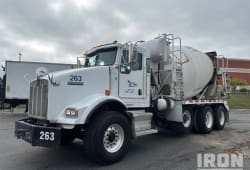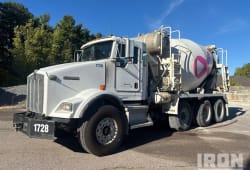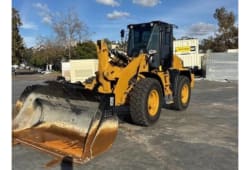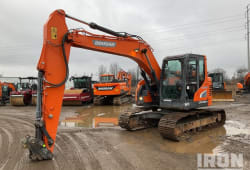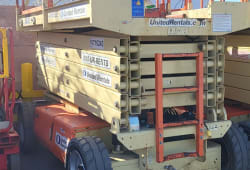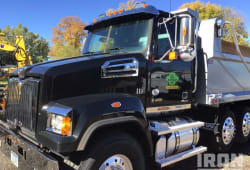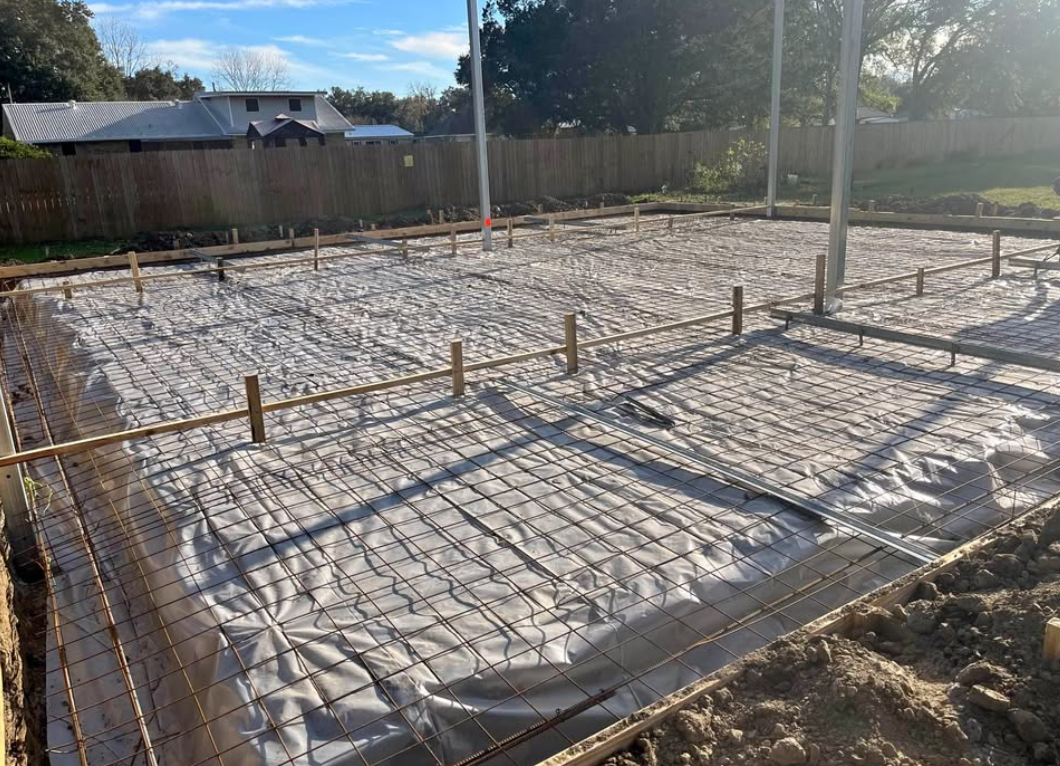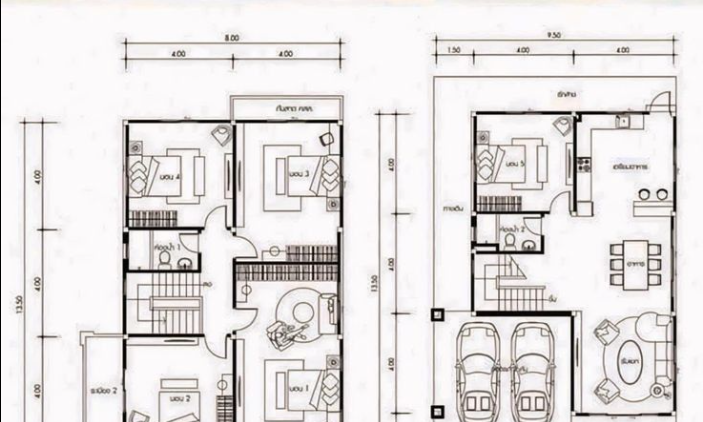How to Find the Best Used Skid Steer For Sale
10 Min read
)
January 6, 2022
If you are in the market for a new skid steer, consider the possibility of investing in used machines before buying brand-new equipment. Skid steers provide a lot of value, and are a fantastic choice for companies looking to expand their capabilities without exhausting their budget.
Why Buy a Used Skid Steer?
Purchasing a skid steer provides your company with the opportunity to expand its capabilities, inventory and fleet, without going beyond your budget. Not only will you save on the typical up-front costs of purchasing a new skid steer engine, but you will also enjoy a larger variety of equipment on offer that ranges in cost, size, make, and model. This means that you can select just the right, versatile piece of machinery that suits your unique needs and budget.
A skid steer buy out also frees up some of your cash to manage your flow and inventory, which allows you to use the difference that was saved to enhance other areas of your business. Since the depreciation of used skid steers is lower than other heavy machinery, you can rest assured that your investment will maintain its value for years to come.
Skid Steers for Sale
:format(webp)) Skid steers, versatile machines designed to handle various challenges on the farm, profoundly affect agricultural efficiency. With robust tracks and a standard set of attachments, skid steer loaders so they can navigate diverse terrains and protect crops during operations. Whether it's about working hours, changing attachments to suit different tasks, or improving overall productivity, skid steers offer a dynamic solution. Farmers often buy these machines for their ability to quickly and efficiently sort, move, and handle items. Purchasing a skid steer means investing in a tool that provides a 360-degree view of the farm, offering flexibility and ease of use while providing a reliable means of completing tasks.
Skid steers, versatile machines designed to handle various challenges on the farm, profoundly affect agricultural efficiency. With robust tracks and a standard set of attachments, skid steer loaders so they can navigate diverse terrains and protect crops during operations. Whether it's about working hours, changing attachments to suit different tasks, or improving overall productivity, skid steers offer a dynamic solution. Farmers often buy these machines for their ability to quickly and efficiently sort, move, and handle items. Purchasing a skid steer means investing in a tool that provides a 360-degree view of the farm, offering flexibility and ease of use while providing a reliable means of completing tasks.
When exploring skid steers for sale, it's crucial to conduct a comprehensive search to find the right machine that meets your specific needs. Online platforms offer a wealth of options, ranging from compact models to heavy-duty equipment. These platforms typically provide a user-friendly interface, allowing users to filter their search based on criteria such as size, capacity, and features. A well-organized search can significantly narrow down the options and streamline the decision-making process.
Once you've identified potential skid steers, managing the information becomes essential. Most online listings offer detailed specifications, including engine power, lift capacity, and attachment options. Managing this data effectively can be the key to making an informed decision. Take note of crucial details like maintenance history, usage hours, and any additional attachments or accessories included in the sale.
Moreover, when considering skid steers for sale, it's advisable to thoroughly review page documentation, which often includes vital information about the machine's performance, maintenance requirements, and warranty details. This documentation can provide valuable insights into the overall condition of the skid steer and help assess its suitability for your intended applications. By carefully navigating through the available information and managing the relevant details, you can ensure a smoother process in finding and acquiring the ideal skid steer for your operational needs.
Maybe you're starting something brand new, if so, check out our in-depth guide on how to start a skid steer business.
How to Choose a Used Skid Steer Sales?
When purchasing equipment search for a skid steer, there may be an overwhelming number of options to choose from. The first step to narrowing down your options is to determine your budget and only look at machines within that range. It is also important to consider what this equipment will be used for, and what will be expected of it while on the job. This information will help further narrow down the options since you will only need to look at machines that have the features, durability, and capabilities of heavy equipment that you will need.
How to Determine the Value Of a Used Skid Steer Loader?
Once you've taken the time to outline your specifications, budget, and expectations, it's time to determine which skid steer models are best suited for your needs. This step can be a bit research-intensive, so it helps to use a reliable source to learn more about each machine. A site such as Boom & Bucket neatly outlines the price, specifications, and details of each machine that is available and delivers the information to you on a user-friendly platform.
Boom & Bucket allows you to carefully evaluate and buy a variety of options and even provides the pros and cons of each individual brand of machine. This allows you to go into your purchase confidently and outlines the benefits of each brand of skid steer, as well as the areas in which it may require some care or attention.
Here is a list of the key areas you should inspect before buying a skid steer, to gather as much information as possible about each machine that is on offer for sale:
Consider Its History
Anytime you are considering buying a used engine or piece of machinery, the first step is to consider checking its history, and gather as much information as possible about its previous owners and how it was used. This is important because if an engine or a skid steer was used incorrectly, it increases the chances of poor performance, costly repairs, or equipment malfunction.
Evaluate Its Log Hours
If you are not familiar with the log hours of heavy machinery, it will be important to do some research at this stage to determine just how many hours would be considered to be “a lot” or “too much” in relation to the age of a machine. Generally speaking, the lower the number of log hours, the more value a machine has to offer. This means that the machine has not been overworked, and has less of a chance of requiring excessive maintenance or repairs.Skid steers that are considered to be full-time are typically used for about six hours per day. To ensure that you are choosing a machine with limited amounts of wear and tear, it is best to choose an option that has an average of four hours and no more than five hours or six hours of continuous use each day.
Look For Or Request An Inspection
Purchasing a skid steer is not something you need to attempt to do on your own. While some defects are clearly visible to the untrained eye, sometimes it takes a skilled professional to see signs of excessive wear, hazards, or defective parts on heavy equipment. It is best to work with a trusted inspector or mechanic who has the experience and equipment knowledge required to thoroughly examine the machine itself, its records, and help advise you on whether or not it is a wise purchase. Certified mechanics, manufacturers and people who have worked with skid steers in the past will arm you with knowledge and assist you in going into your purchase as a well-informed buyer.
If the machine listing doesn't include an inspection report it's wise to request one from the seller. You also can book an inspection service through most mobile mechanics or local dealers like Caterpillar or John Deere. Most dealerships or platforms like Boom and Bucket will perform thorough inspections prior to machines being listed on their websites.
Look Over Maintenance Records
Just like cars and tires, used machinery such items such as skid steers often have their own maintenance records. Not only do these records document the tasks that has been done on the skid steer, but they also provide evidence of what was not done. To keep equipment running smoothly, it is imperative that it receives routine maintenance and repairs. If not well-maintained, the machine has decreased durability and reliability, and is at risk of needing more expensive repairs.
Before making a purchase, make sure to check that the skid steer items that you buy have been frequently inspected, and have a thorough maintenance record on file.
Conduct a Visual Inspection
Last but not least, you will want to do a visual inspection of the machine to check for any signs of wear, tear, and damage. Signs to be aware of include scratches, dents, cracks, worn-out cables, failing welds, oil or hydraulic leaks, and engine smoke. It is also important to inspect the lights, battery, tires, windows, bucket, canopy, and seatbelt functionality to determine the condition of the skid steer. Failing to inspect these areas prior to making a purchase puts you at risk of going over-budget with costly repairs that could have been avoided if the machine was thoroughly inspected.
Here's a table summarizing the key points on how to find the best-used skid steer for sale:
:format(webp)) This table highlights essential tips for finding the best-used skid steer for sale, emphasizing considerations such as maintenance history, usage hours, collaboration with professionals, thorough inspections, and utilization of reliable sources for research and evaluation.
This table highlights essential tips for finding the best-used skid steer for sale, emphasizing considerations such as maintenance history, usage hours, collaboration with professionals, thorough inspections, and utilization of reliable sources for research and evaluation.
Expert Tips for Smart Skid Steer Purchases
5: Assess Usage History and Log Hours :
Examine the usage history and log hours of the skid steer.
Lower log hours indicate less wear and tear, translating to greater value and reduced risk of excessive maintenance or repairs.
Aim for machines with limited hours of continuous use per day.
4: Collaborate with a Qualified Mechanic :
Seek assistance from a trusted mechanic experienced in inspecting heavy machinery.
A professional assessment can reveal hidden defects, hazards, or defective parts, ensuring informed purchasing decisions and preventing unforeseen issues post-purchase.
3: Conduct a Thorough Visual Inspection:
Perform a comprehensive visual inspection of the skid steer.
Identify signs of wear, tear, or damage such as scratches, dents, cracks, worn-out components, and failing welds.
Evaluate the condition of essential features like lights, tires, and canopy.
2: Utilize Reliable Sources for Research and Evaluation:
Utilize reputable sources such as Boom & Bucket for researching and evaluating available skid steers.
Gather detailed information on pricing, specifications, and machine condition to facilitate informed decision-making and confident purchases.
1: Explore Auction Opportunities for Quality Machinery :
Consider participating in auctions to acquire quality skid steers with advanced engine technology.
Auction sites offer a diverse range of models equipped with specific features and capabilities, providing opportunities to obtain reliable and efficient machinery.
The End
Auctions present a viable avenue for acquiring a diverse range of skid steer loaders. Prospective buyers should take note of the range of models available, each equipped with specific features and capabilities. Manufacturers continually improve skid steer designs, enhancing efficiency and performance. When considering a purchase, it's essential to check and sort through various models and take note of the specifications that align with operational needs. The ability to change attachments allows these machines to operate seamlessly across different work areas, offering versatility on the field. Keep an eye on auction sites for opportunities to obtain quality skid steers equipped with advanced engine technology, ensuring optimal performance and productivity.

